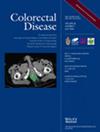Impact of hospital volume on survival in patients with locally advanced colon cancer – A Dutch population-based study
Abstract
Aim
Locally advanced colon cancer (LACC) often necessitates complex prognosis-determining treatment. This study investigated the impact of hospital volume on short- and long-term outcomes following surgery for LACC.
Method
Data involving all patients with LACC categorized as clinical T4 and/or N2, between 2015 and 2019 in the Netherlands, were extracted from the Netherlands Cancer Registry. Hospitals were stratified into low volume (1–19 LACC resections per year), medium volume (20–29 LACC resections per year) and high volume (≥30 LACC resections per year). Data were analysed using Kaplan–Meier curves, logistic regression analysis and Cox-regression models.
Results
A total of 49 298 patients were diagnosed with colon cancer, of whom 9206 (18.7%) had locally advanced disease. Of these 9206 patients, resection was performed in 8537 with a median age of 71 (interquartile range: 63–78) years. Patients were more likely to undergo laparoscopic procedures in high-volume hospitals than in low-volume hospitals (OR = 1.28, 95% CI: 1.12–1.46). No risk differences in anastomotic leakage or postoperative 90-day mortality were observed according to hospital volume. Five-year overall survival rates were comparable among high-, medium- and low-volume hospitals (58.7% vs. 58.0% vs. 60.0%, p = 0.62). Hospital volume was not associated with overall survival in multivariable analysis. Independent predictors of worse overall survival included older age, higher American Society of Anaesthesiologists score, emergency/urgent setting, anastomotic leakage, higher pTNM status, involved resection margins and no adjuvant chemotherapy.
Conclusion
Despite the complexity of surgical treatment, hospital volume was not associated with survival in LACC. Hospital volume might be an imperfect surrogate for quality assessment.


 求助内容:
求助内容: 应助结果提醒方式:
应助结果提醒方式:


